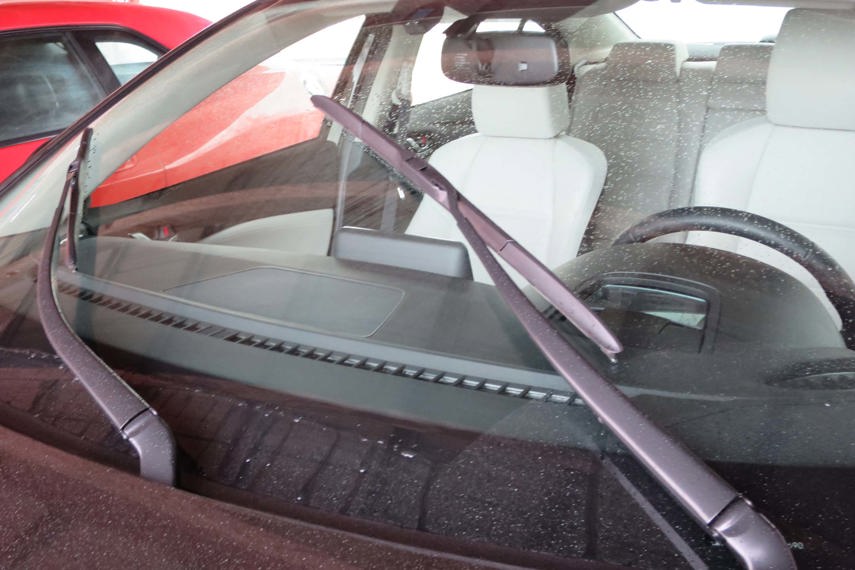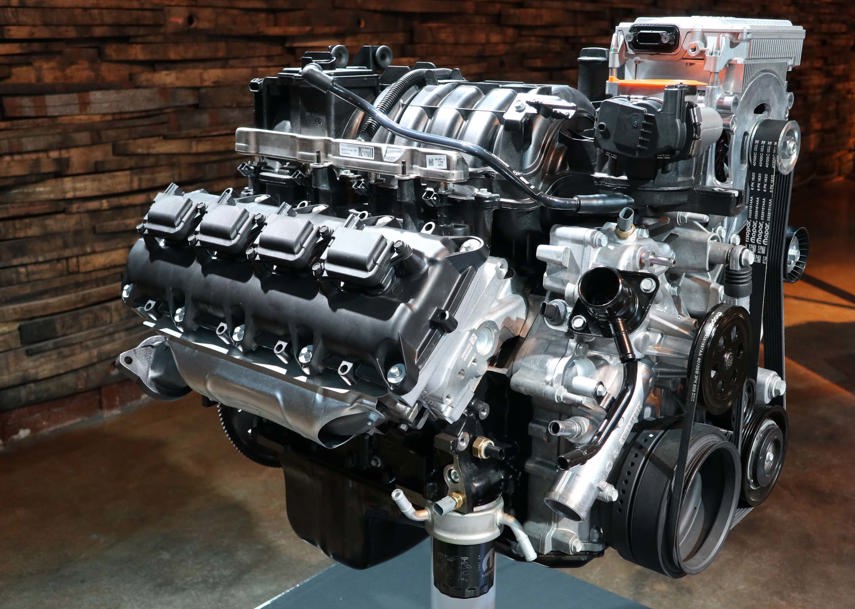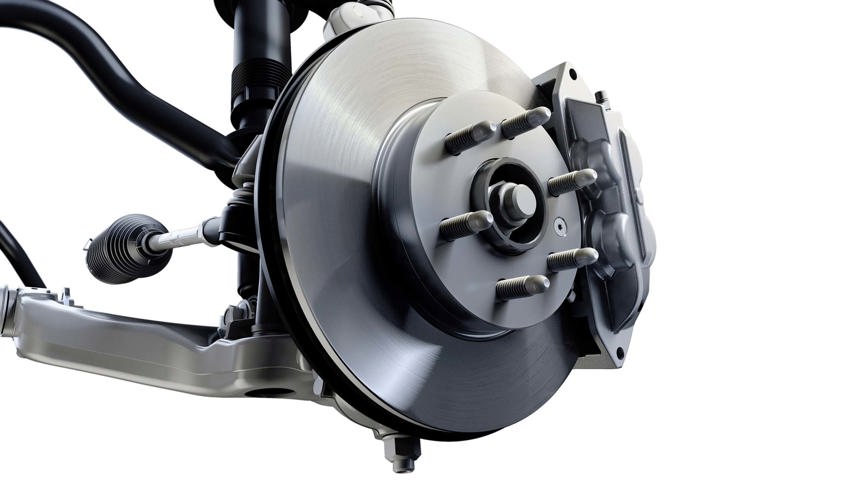Drivers usually get something fixed right away when it breaks, but wear items can be different. You might not notice them gradually wearing out until it’s too late – and in the meantime, they can cause problems even before they finally throw in the towel. Keep an eye on these vital but often neglected parts of your car.
Shock Absorbers

Your shock absorbers don’t just smooth out your ride. They also keep your tires firmly in contact with the asphalt, and provide stability on curves and during lane changes. Yet most auto recyclers will tell you that while the worn-out vehicles in their yard will have several replacement parts on them, many (if not most) will still be on their factory-installed shocks.
Check underneath your vehicle every now and again. If you see oil running down a shock, it’s leaking and needs to be replaced.
If you think your shocks are getting old and worn, do a “bounce check.” Push down hard on each corner of the car. If it bounces back more than twice, you need new shocks. You can also accelerate fast and then brake hard (do this in an empty parking lot) and if the nose dives and bounces, it’s time for shock replacement.
Spare Tire Carrier

On most pickup trucks and some SUVs, the spare tire hangs under the chassis, suspended by a cable that you winch down to access the tire. Salt and road grime gradually eat away at this. If it isn’t maintained, the cable will seize – meaning you won’t be able to get the tire out when you need it – or it will break, which can turn that wheel into a deadly hazard for drivers behind you.
At least once a year, you should winch the spare down and then clean and grease the cable and mechanism. If it already looks sketchy, replace it. And while you’re there, check the tire pressure – which you should do regularly on any spare tire, regardless of where it’s located, because a flat spare will get you nowhere.
Tire Dates

In addition to checking your tires’ tread and overall condition, you should also check their age. As the rubber compound gets older, it becomes more susceptible to cracking and failure. There are no firm guidelines, but it’s usually recommended that tires be replaced when they’re between six to ten years old – with the younger end of the scale for tires that run in hot weather or are continually exposed to strong sunlight. This includes tires that have been in storage.
To check the age, look for a series of numbers on the sidewall that start with “DOT.” (It may be on only one side of the tire.) You want the four-digit number at the end. The first two digits are the week the tire was made, while the second two are the year – for example, 0514 indicates the fifth week of 2014. If there are only three digits, the tire is older than 2000 and is way beyond its best-before date. And when you buy new tires, check the codes to be sure you’re getting fresh ones.
Wiper Blades

You’d think this would be obvious, but a surprising number of drivers hang onto their blades until they’re no good at all. Replace them whenever they leave streaks, don’t clear the whole sweep area, or if they chatter. And if you have an SUV, replace your rear blade regularly. The rear window gets a lot of grime and gravel kicked up onto it, and that blade may need replacing even sooner than the front ones. If you ignore it, you can risk scratching your back glass.
Wheel Bearings

Most new vehicles have sealed hubs that don’t require servicing, but older ones, and many trailers, have wheel bearings that should be regularly maintained by being packed with grease. If they’re left too long, they can heat up and seize – which results in most of those trailers you see sitting helplessly on the side of the highway.
TPMS Sensors

There are two types of tire pressure monitoring systems: indirect, which use external sensors to determine wheel speed; and direct, which have pressure sensors inside the tires. Those direct sensors contain tiny batteries, which have an estimated lifespan of about five to ten years. If your TPMS stops working properly, a dead battery could be the culprit.
The sensors are sealed units and you’ll have to replace the whole thing, rather than just its internal power source. If you’re getting new tires and the sensors are elderly, you might consider replacing them while the tech’s already got everything apart.
Engine Belt

Your engine’s serpentine belt runs several components, which can include the alternator, power steering pump, and air conditioning compressor. It eventually wears out and if it breaks, it can leave you stranded. Check it periodically to be sure it isn’t cracked or brittle and replace it promptly if it is.
Timing Belt

Engines have either timing chains or timing belts that run between the crankshaft and camshaft to operate the valves. Timing chains are pretty much maintenance-free, but timing belts will eventually wear out. An engine with a broken timing belt won’t run, and in some cases, can potentially suffer catastrophic internal damage.
You can’t see the timing belt to check its condition (it’s not the belt that’s visible when you open the hood – that’s the engine serpentine belt), so you need to follow the recommended replacement schedule in your owner’s manual. When you do, the technician will usually suggest that you change the water pump also. He’s not trying to pad the bill. The water pump is a wear item too, and since it usually has to come off to get to the timing belt, you’ll save the labour cost versus replacing it separately later on.
Ball Joints

Ever see a vehicle stuck on the side of the road with a front wheel tucked in under it? That’s a broken ball joint, a component that connects the wheel to the front suspension. Older ones needed to be greased regularly. New ones are permanently sealed and don’t require maintenance, but they eventually will wear out. They should be checked during each scheduled maintenance, or any time you hear a clunking or creaking in the front end, or if your vehicle pulls to one side, which can be indicative of a ball joint that’s on its way out.
Brake Caliper Slider Pins

Calipers hold the brake pads, and when you put your foot on the brake pedal, they push those pads against the spinning brake rotor to stop your vehicle. The caliper uses slider pins – also known as guide pins – that ensure the pads are at the correct angle when they contact the rotor.
You should have the calipers serviced to the recommended schedule in your owner’s manual. Maintenance includes cleaning and lubricating the pins so the caliper slides smoothly. If the pins are rusted or corroded, or if any of the bushings or seals are brittle or swollen, they need to be replaced.
Hoses

Hoses under the hood carry coolant between the radiator, engine, and heater core, and because they’re primarily made of rubber, they will wear out. If you don’t catch them in time they can split, which can result in your engine overheating. Give them a squeeze (when the engine’s cold). They shouldn’t feel soft or gummy, and they also shouldn’t feel hard or brittle. If they do feel not-right, get ’em replaced as soon as possible to avoid any issues.













